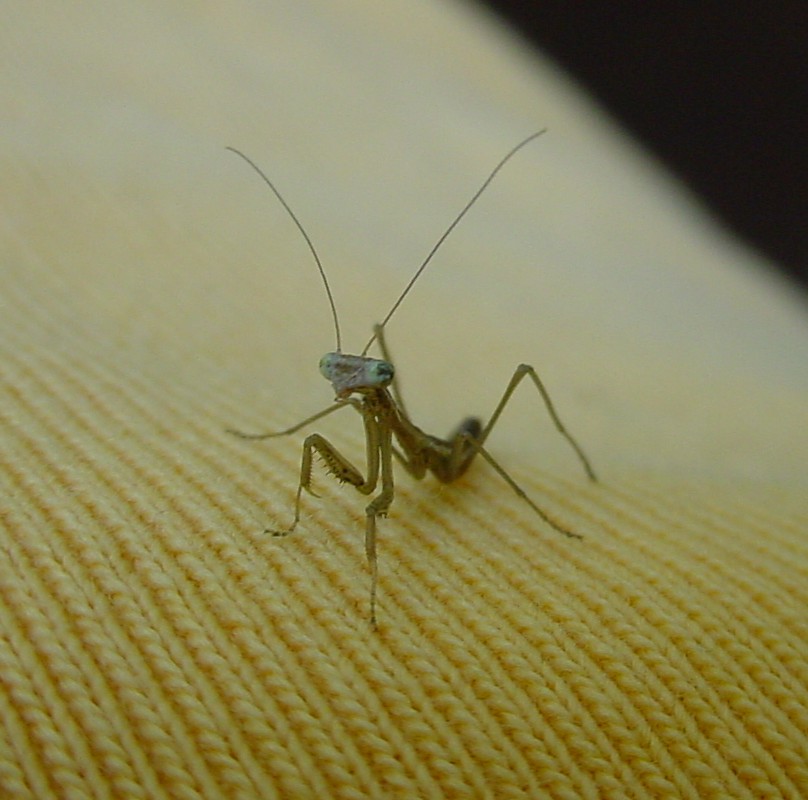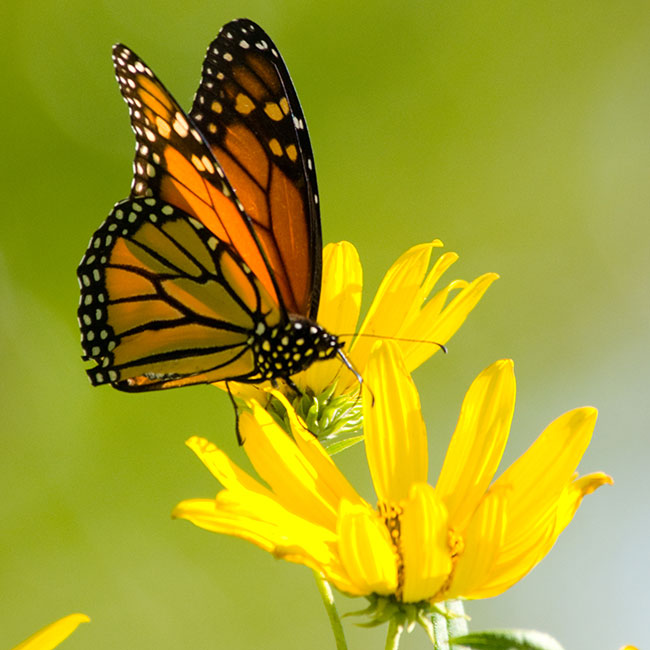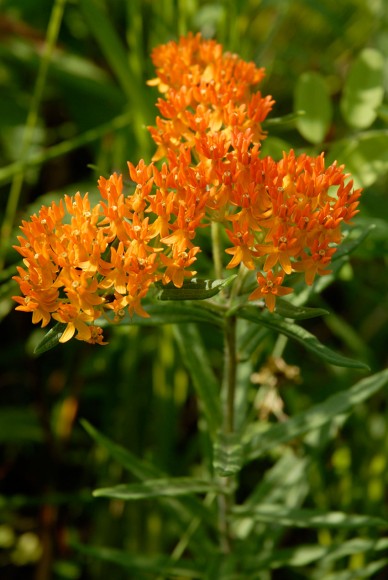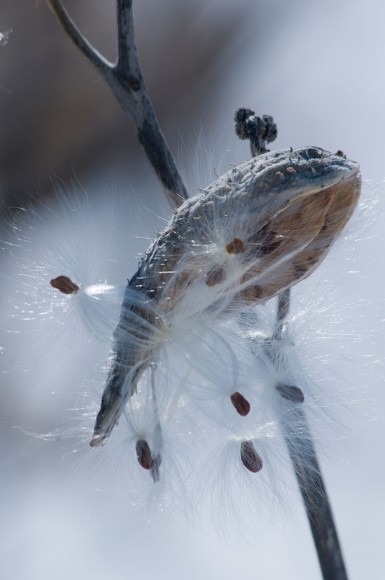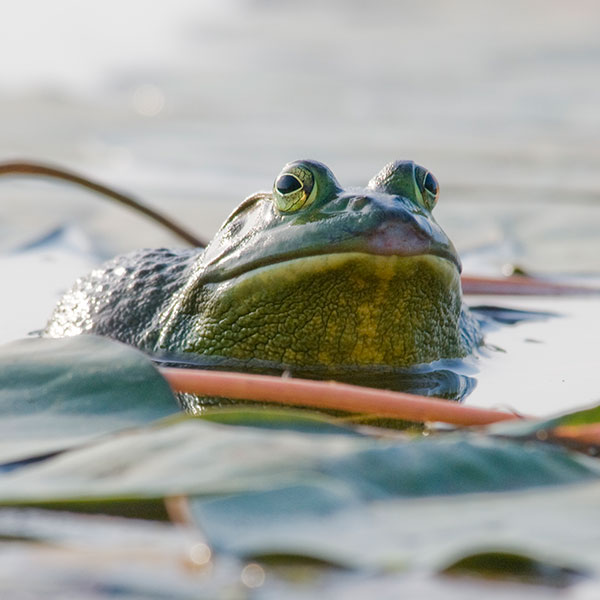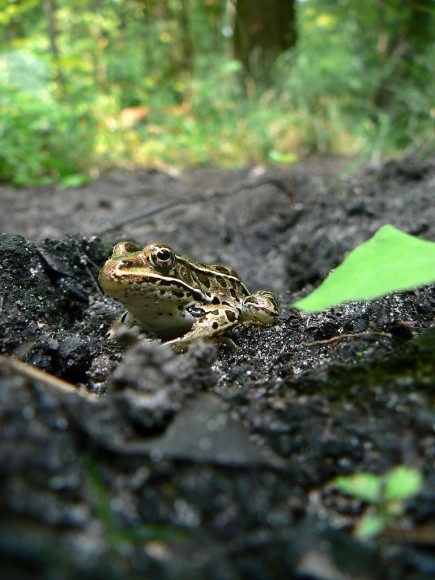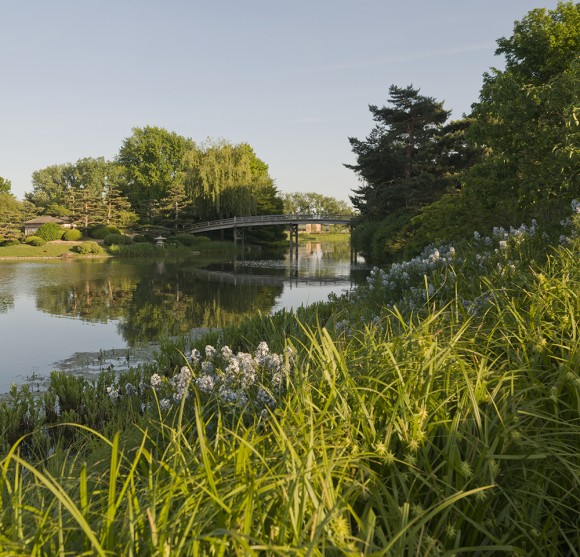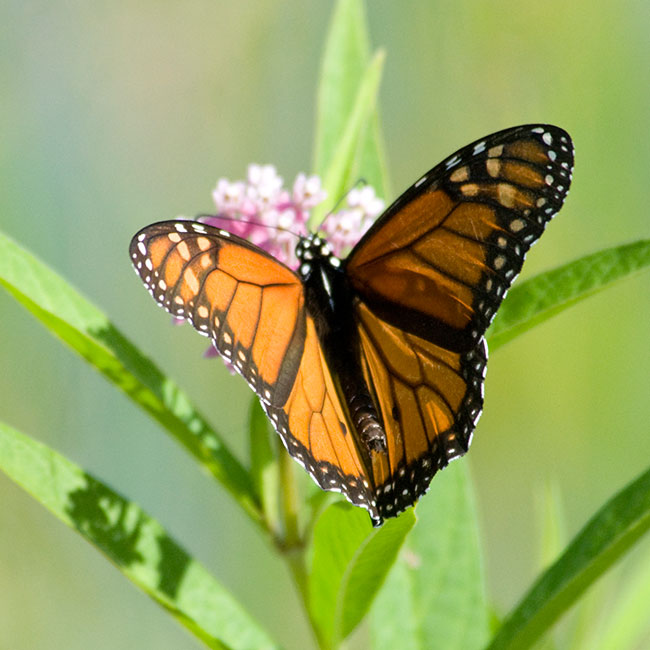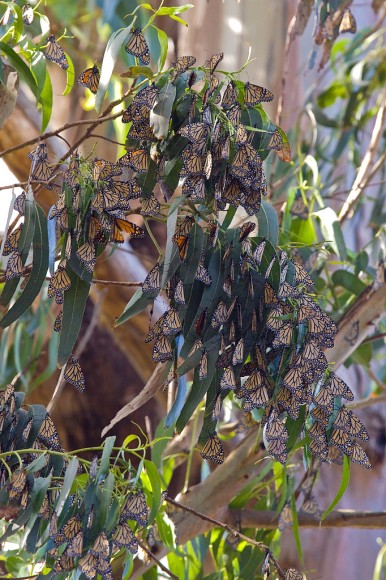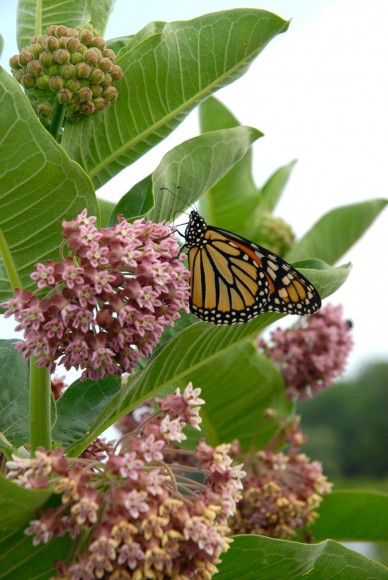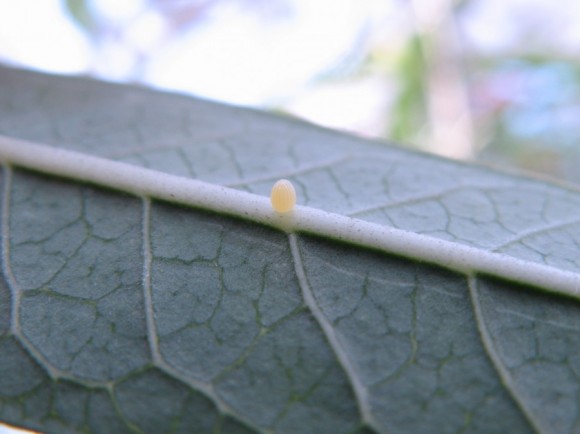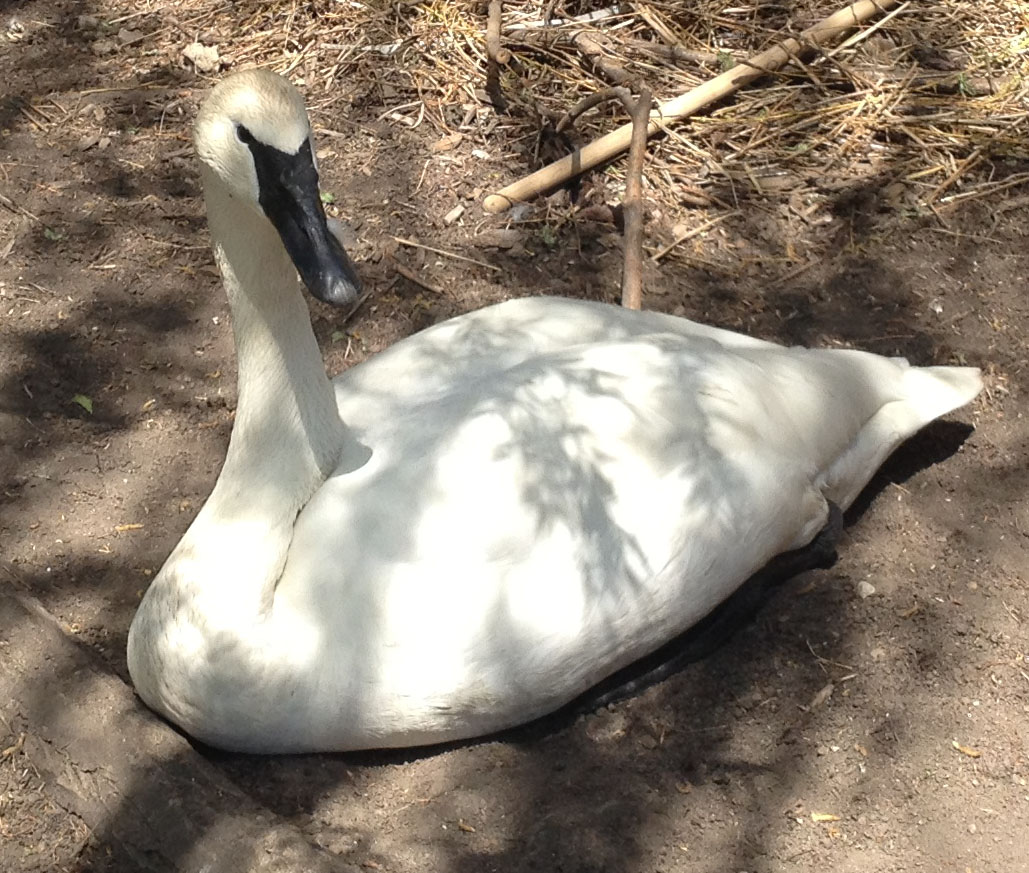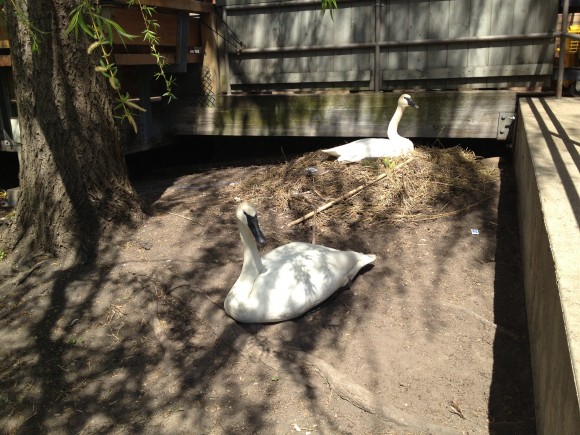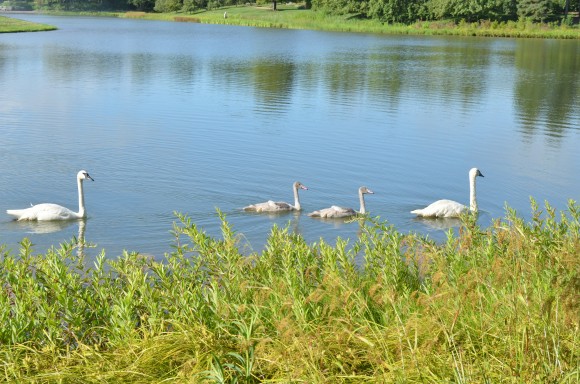One of our favorite insects at the Chicago Botanic Garden is the praying mantis. So we were very excited to obtain an egg case earlier this spring. We decided to keep it indoors so we could watch it hatch, and then release the newly hatched insects into the Garden.
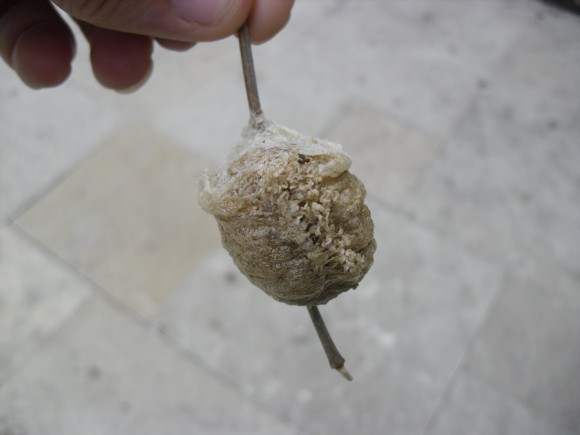
A praying mantis egg case is called an ootheca (pronouned oh-uh–THEE-kuh). The plural is oothecae (oh-uh-THEE-see). The ootheca was produced by a female praying mantis last fall. She laid her eggs in this foam of protein that hardened around a stick and protected the eggs through the winter. The eggs usually hatch in mid-June to early July. The half-inch-long immature praying mantis nymphs resemble the adult, but they do not have wings.
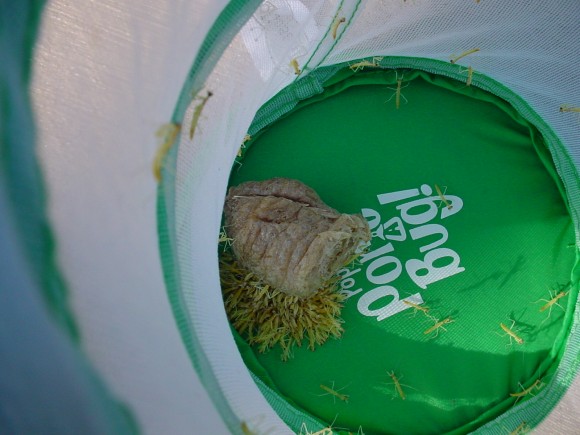
After our praying mantises hatched inside an insect cage, I discovered that a bed of false sunflower plants (Heliopsis helianthoides) in the Grunsfeld Children’s Growing Garden was infested with red aphids. I released the praying mantises, and the hungry babies immediately began to feed.
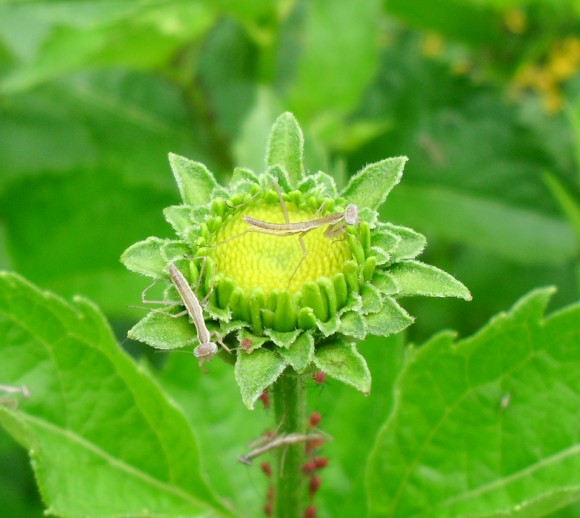
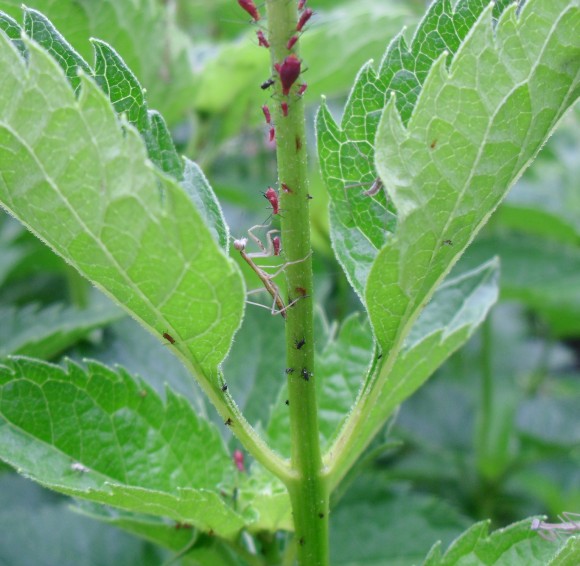
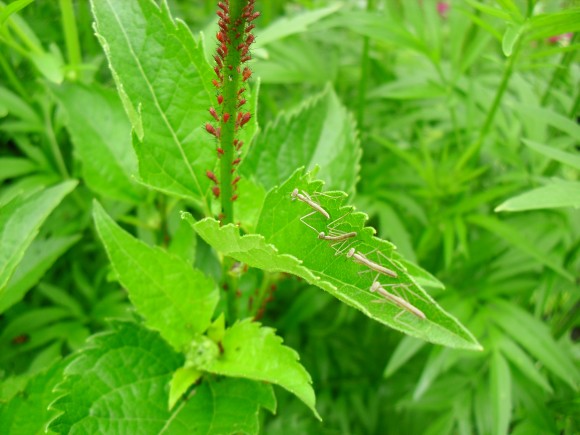
It wasn’t exactly aphid carnage—much to the disappointment of our eighth grade Camp CBG helper, Joshua, who assisted me with the release—but the young predators did appear to enjoy their first meal.
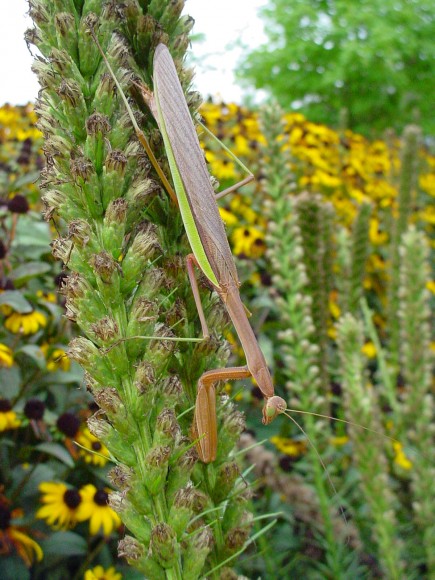
It may surprise you to know that although it looked like a bad infestation, aphids are not really a big problem for the plants. When they are very abundant, it does not take long for natural predators like praying mantises and ladybugs to find them and move in for a feast. Predatory insects will take care of the problem if you are patient and let nature take its course. If aphids show up in your garden and they bother you, we recommend hosing them off with water rather than using an insecticide, because chances are pretty good that there are beneficial insects on your plants, too. Hosing with a strong jet of water will knock off all the bugs and kill most of the aphids, but it won’t be as devastating to the mantises or other beneficial insects as poison.
We have placed praying mantis oothecae in the Regenstein Fruit & Vegetable Garden and Elizabeth Hubert Malott Japanese Garden, as well as in the Children’s Growing Garden, to ensure that there will be a population of our favorite insect for you to find. Many of them will survive on aphids and other insects they capture and devour on our flowers, and they will grow up over the summer. The next time you visit, stop by and see if you can find them helping our plants remain healthy and less bothered by pests.
©2014 Chicago Botanic Garden and my.chicagobotanic.org

